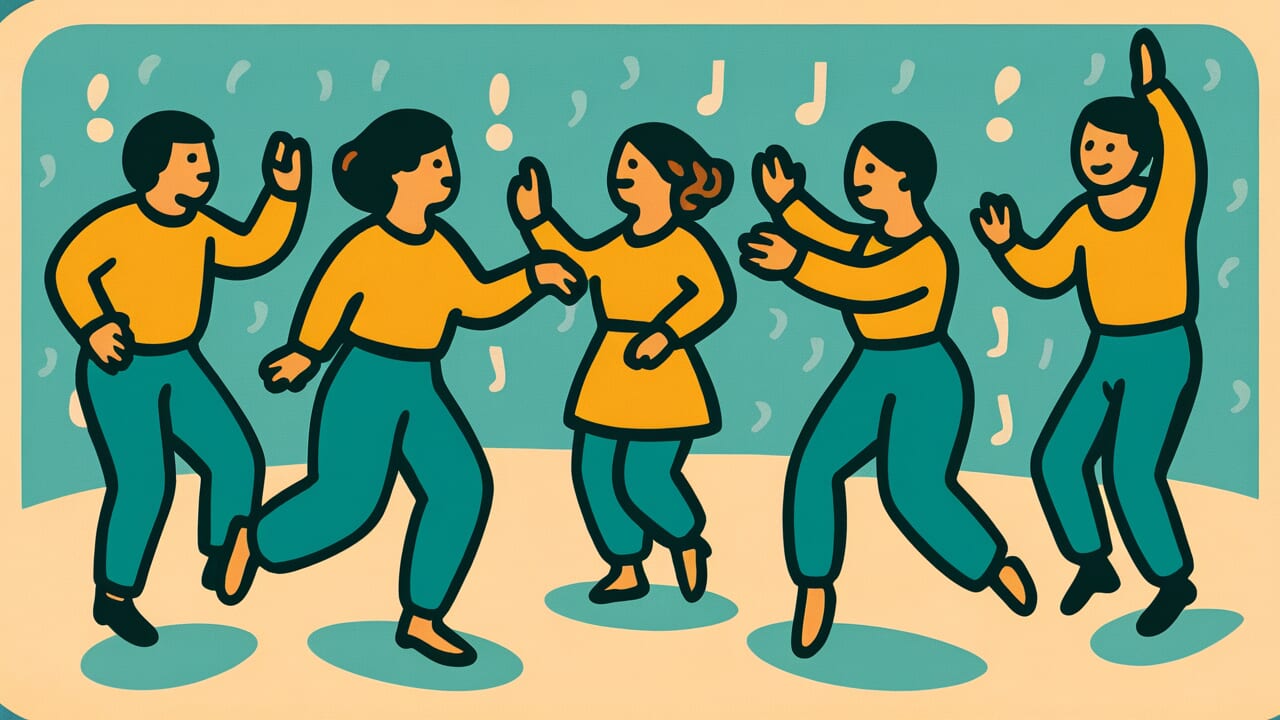How to Read “Three dancers, eight spectators”
Odori sannin mite hachinin
Meaning of “Three dancers, eight spectators”
This proverb shows a common pattern in human society. Few people actually take action, while many people criticize from the sidelines.
Only a small number of people challenge themselves to try new things or act in front of others. Meanwhile, far more people watch from the outside and say things like “they should do it this way” or “that’s not how it’s done.”
Using dance as a metaphor, only three people get on stage to perform. But eight people watch and critique their performance.
This proverb contrasts the difficulty of taking action with the ease of criticizing. When you actually do something, you risk failure and embarrassment.
But critics don’t face these risks. They can share their opinions from a safe position.
We still see this pattern today. It appears on social media, in new projects, and in many other situations.
The proverb captures a timeless feature of human society. There are always fewer doers than critics.
Origin and Etymology
No clear written records explain the origin of this proverb. However, scholars believe it emerged from common people’s culture during the Edo period.
“Three dancers” refers to performers who actually dance on stage or in public squares. “Eight spectators” represents the audience members who watch and critique the performance.
The numerical contrast is fascinating. The specific ratio of three to eight isn’t based on actual statistics. Instead, it’s a rhetorical device that vividly conveys how few people act compared to how many criticize.
During the Edo period, dancing was popular entertainment for common people. They enjoyed bon dances and festival performances.
However, only a limited number of people had the courage to dance in public. Most people stayed on the sidelines, watching and commenting. They would say “that dancer is skilled” or “that one is clumsy.”
From this scene, people recognized a universal pattern in human society. Few people work hard to accomplish something.
Many people criticize from safe positions. The proverb expresses this social truth through the familiar image of dancing.
It shows the sharp observational skills of common people. They created an expression that hits the mark perfectly.
Usage Examples
- When I proposed a new plan, people who do nothing themselves complained the most. It’s truly “Three dancers, eight spectators.”
- Many people criticize my friend who started a business. But “Three dancers, eight spectators” – he deserves respect for actually taking action.
Universal Wisdom
“Three dancers, eight spectators” reveals a fundamental psychological mechanism in humans. Why are there so few people who act and so many who criticize?
Taking action carries a high psychological cost. When you do something in front of others, you might fail. People might laugh at you or criticize you.
These fears are unavoidable emotions. As social creatures, we cannot escape them. The fear of rejection by the group is a primitive emotion encoded in our DNA.
On the other hand, becoming a critic feels psychologically safe. You don’t take any risks yourself. You can evaluate things from a superior position.
Furthermore, criticizing gives you satisfaction. You feel like “I have good judgment.” People instinctively choose this easier position.
However, our ancestors understood this human nature. They didn’t simply criticize it. Instead, they preserved it as a proverb.
They wanted to give us a chance to think about which side we should stand on. By recognizing this pattern, we can make better choices.
The courage to act is precious. Easy criticism is empty. Understanding this contrast is the first step toward personal growth.
When AI Hears This
The ratio of three dancers to eight spectators demonstrates remarkable asymmetry in information transmission. Information theory shows that when signals travel from one source to multiple receivers, interpretations explode exponentially.
Let’s calculate this concretely. Suppose the three dancers transmit information through three elements: “movement,” “expression,” and “rhythm.”
The eight spectators each observe from different perspectives. One person focuses on footwork. Another watches hand gestures.
If each of the eight people emphasizes two of the three elements, the combinations create 8×3, or 24 different observations. When you add each person’s experience and preferences as filters, interpretation patterns increase exponentially.
This is exactly the signal-to-noise ratio problem in communications engineering. The original signal – the message the dancers want to convey – comes from only three people.
But on the receiving side, eight people’s interpretations emerge. During this process, massive amounts of noise from personal subjectivity get mixed in.
The result is that noise becomes 2.67 times the original signal strength.
In other words, this proverb numerically expresses a fundamental asymmetry in information transmission. The critic side generates overwhelmingly more information than the creator side.
Lessons for Today
This proverb teaches modern people to stay aware of which side they’re standing on.
In our daily lives, do we unconsciously become “spectators”? We criticize someone’s social media post. We mock new attempts, saying “that will never work.”
In those moments, we might just be throwing stones from a safe zone.
Of course, not everyone needs to become a “dancer.” But we can at least pause before criticizing and think.
Ask yourself: “Could I do this myself?” “Is this criticism constructive?”
And if you want to challenge something, don’t fear the voices of “spectators.” Critics are always the majority.
But that’s not because they’re right. It’s simply because criticizing is easier.
Throughout history, the few “dancers” have always moved the world forward.
Why not find the courage to become a dancer yourself? Don’t fear failure. Don’t worry about criticism. Follow the path you believe in.
That one step will enrich your life.



Comments